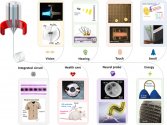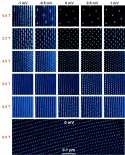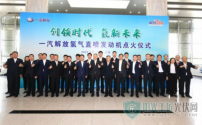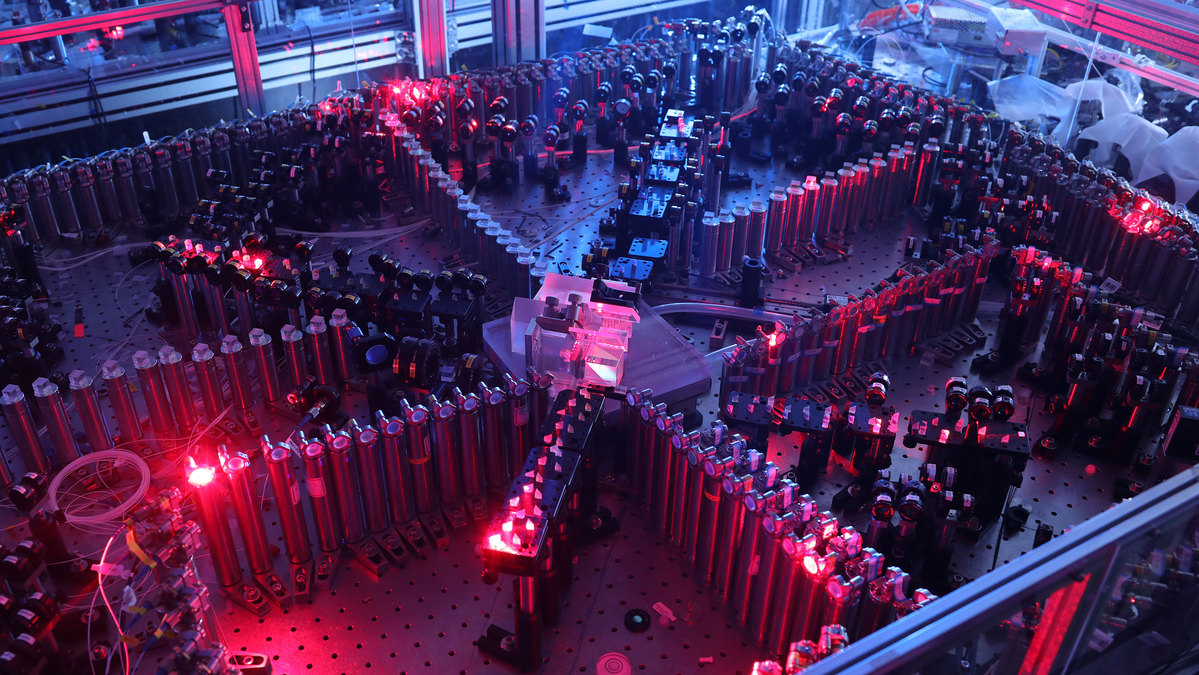I didn't know this. Wuntian has a much wider FOV coverage than Hubble, even as Hubble has the slight resolution advantage. Wuntian is intended for surveying the skies. The imaging sensor for Wuntian is a half a meter square on each side. That's freaking enormous. That's an extreme optical design challenge to get an image completely flat across such a large surface.
You are using an out of date browser. It may not display this or other websites correctly.
You should upgrade or use an alternative browser.
You should upgrade or use an alternative browser.
News on China's scientific and technological development.
- Thread starter Quickie
- Start date
Research team from CAS made breakthrough in making "multifunctional fibers".
Paper published in English:

News report in Chinese:
Paper published in English:
Thermally drawn multifunctional fibers: Toward the next generation of information technology
As the fundamental building block of optical fiber communication technology, thermally drawn optical fibers have fueled the development and prosperity of modern information society. However, the conventional step-index configured silica optical fibers have scarcely altered since their invention. In recent years, thermally drawn multifunctional fibers have emerged as a new yet promising route to enable unprecedented development in information technology. By adopting the well-developed preform-to-fiber manufacturing technique, a broad range of functional materials can be seamlessly integrated into a single fiber on a kilometer length scale to deliver sophisticated functions. Functions such as photodetection, imaging, acoustoelectric detection, chemical sensing, tactile sensing, biological probing, energy harvesting and storage, data storage, program operation, and information processing on fiber devices. In addition to the original light-guiding function, these flexible fibers can be woven into fabrics to achieve large-scale personal health monitoring and interpersonal communication. Thermally drawn multifunctional fibers have opened up a new stage for the next generation of information technology. This review article summarizes an overview of the basic concepts, fabrication processes, and developments of multifunctional fibers. It also highlights the significant progress and future development in information applications.

News report in Chinese:
中科院在热拉制多功能纤维研究获得重要进展
近日,中国科学院工程热物理研究所储能研发中心在面向新一代信息技术的热拉制多功能纤维方面取得重要进展,通过研究五感纤维、健康监测纤维、神经探针、集成电路纤维和能源纤维,总结了热拉制多功能复合纤维的制备工艺、内部结构、性能提升和信息交互功能等。
目前,热拉制功能纤维已实现光电探测、成像、声电探测、化学传感、触觉传感、生物探测、能量采集与存储、数据存储和信息处理等功能,展现出热拉制功能纤维在新一代信息技术领域的广阔应用潜力。这些柔性纤维除了原有的导光功能外,还可以编织成织物,有助于实现大规模的个人健康监测和人际交流。
对此,储能研发中心对“视”,“听”,“嗅”,“味”,“触”五感纤维、健康监测纤维、神经探针、集成电路纤维和能源纤维开展研究,总结热拉制多功能复合纤维的制备工艺、内部结构、性能提升和信息交互功能等。此外,团队研究分析和展望了热拉制多功能复合纤维的关键科学问题、解决思路以及面向新一代信息技术领域的全纤维器件。
Backpropagation with biologically plausible spatiotemporal adjustment for training deep spiking neural networks
- BPSA avoids the unnecessary influence from non-spiking neurons to the weights update
- BPTA helps transmit errors across spikes to enhance the temporal dependency
- BPSA and BPTA have improved the performance of BP-based SNNs
- BPSA and BPTA can reduce the energy consumption and latency of BP-based SNNs
The spiking neural network (SNN) mimics the information-processing operation in the human brain. Directly applying backpropagation to the training of the SNN still has a performance gap compared with traditional deep neural networks. To address the problem, we propose a biologically plausible spatial adjustment that rethinks the relationship between membrane potential and spikes and realizes a reasonable adjustment of gradients to different time steps. It precisely controls the backpropagation of the error along the spatial dimension. Secondly, we propose a biologically plausible temporal adjustment to make the error propagate across the spikes in the temporal dimension, which overcomes the problem of the temporal dependency within a single spike period of traditional spiking neurons. We have verified our algorithm on several datasets, and the experimental results have shown that our algorithm greatly reduces network latency and energy consumption while also improving network performance.
近日,中国科学院自动化研究所类脑智能研究中心研究员曾毅团队提出并实现了一种具有生物合理性的类脑脉冲神经网络训练方法,该方法能够在提高脉冲神经网络的性能的同时,明显降低网络的延迟以及能源消耗。
Discovery by scientists from CAS "provides a pathway towards tunable and ordered Majorana-zero-mode lattices as a platform for future topological quantum computation."
News release in Chinese by CAS:

News report in Chinese by Xinhua:
Ordered and tunable Majorana-zero-mode lattice in naturally strained LiFeAs
Majorana zero modes (MZMs) obey non-Abelian statistics and are considered building blocks for constructing topological qubits,. Iron-based superconductors with topological bandstructures have emerged as promising hosting materials, because isolated candidate MZMs in the quantum limit have been observed inside the topological vortex cores,,,,,,. However, these materials suffer from issues related to alloying induced disorder, uncontrolled vortex lattices,,, and a low yield of topological vortices,,,. Here we report the formation of an ordered and tunable MZM lattice in naturally strained stoichiometric LiFeAs by scanning tunnelling microscopy/spectroscopy. We observe biaxial charge density wave (CDW) stripes along the Fe–Fe and As–As directions in the strained regions. The vortices are pinned on the CDW stripes in the As–As direction and form an ordered lattice. We detect that more than 90 per cent of the vortices are topological and possess the characteristics of isolated MZMs at the vortex centre, forming an ordered MZM lattice with the density and the geometry tunable by an external magnetic field. Notably, with decreasing the spacing of neighbouring vortices, the MZMs start to couple with each other. Our findings provide a pathway towards tunable and ordered MZM lattices as a platform for future topological quantum computation.
News release in Chinese by CAS:
科学家实现大面积、高度有序和可调控的“马约拉纳零能模‘格点阵列’”
马约拉纳零能模是凝聚态物理中的一类拓扑非平庸准粒子激发,因其服从非阿贝尔统计规律,被认为是构筑拓扑量子比特的基本单元。在晶体材料体系中寻找并调控马约拉纳零能模是实现拓扑量子计算的关键步骤,也是凝聚态物理前沿研究方向之一。近年来,在拓扑非平庸的铁基超导体中寻找马约拉纳零能模已经取得了长足的进展。与其他体系(如超导-半导体纳米线、磁性原子链、拓扑绝缘体/超导异质结等)相比,铁基超导体具有单一组分、高温超导、本征拓扑等性质,避免了复杂的材料结构设计和极低温的观测条件等问题,是研究马约拉纳零能模的理想载体。
最近,中国科学院院士、中国科学院物理研究所研究员高鸿钧团队对铁基超导体LiFeAs进行了更加细致而深入的研究。他们在实验上发现,应力可以诱导出的大面积、高度有序和可调控的马约拉纳零能模格点阵列。
这些研究结果表明,大面积有序可调的马约拉纳零能模阵列可以在LiFeAs中稳定存在,为实现拓扑量子计算提供了重要的高质量研究平台。

图四:用磁场调控大面积有序的马约拉纳零能模格点阵列
News report in Chinese by Xinhua:
新华社北京6月8日电(记者张泉)马约拉纳零能模是一类存在于固体材料中的准粒子,这种粒子的编织操作对于量子计算技术的进一步发展具有重要意义。
中科院物理研究所高鸿钧院士带领的联合团队首次实现了大面积、高度有序和可调控的马约拉纳零能模格点阵列,向拓扑量子计算的实现迈出了重要一步。相关成果8日在国际学术期刊《自然》发表。
相比传统计算机,量子计算机在处理复杂问题时有着巨大的优越性。然而,量子态很容易受环境干扰,产生退相干现象,从而使得计算过程中会不断产生错误。而由马约拉纳零能模组成的非局域拓扑量子比特,可以从原理上解决量子退相干问题。
据介绍,在早期观测马约拉纳零能模的载体材料中,比较有代表性的包括常规超导体近邻下的半导体纳米线、常规超导体表面的磁性原子链,以及超导体-拓扑绝缘体界面等。但这些材料往往存在制备困难、对极低温的要求较苛刻等问题。
2018年,高鸿钧团队与合作者利用自主设计组装的国际顶尖水平的极低温强磁场扫描隧道显微镜/谱联合系统,首次在铁基超导体中观测到马约拉纳零能模。与之前的载体材料相比,铁基超导体具有材料简单和观测温度高等优势,并且可以观测到纯净的马约拉纳零能模。随后,他们进一步澄清了马约拉纳零能模的拓扑本质,并在更多载体平台上发现了马约拉纳零能模。
接下来,如何获得大面积、高度有序且可调控的马约拉纳零能模阵列,向拓扑量子计算更进一步,便成为铁基超导马约拉纳领域亟待解决的问题。
Right, but thats where engineering comes in. Furthermore, yea they do have to shrink it down but not by much. Human veins and arteries are about the size this robot is. Arterioles are certainly much smaller, but we treat them differently in the first place.That'd be wonderful. But I think there are challenges ahead.
First of all, they will have to shrink it further down. This robot is still too big for (human) blood vessels.
Blood vessels are "tender" and in "irregular" shapes than the engine pipelines. I'd imagine it's going to be a lot more difficulty for this robot to move in such environment. The robot currently moves in pipes based on the "principle of high frequency peristalsis movement (高频蠕动运动原理)". IIUC, that means that it probably needs a hard surface to "scale".
As for movement, that's the interesting bit. Because right now we have to use permanent stents, and maybe instead we don't need to. Or we can make stenting easier and decrease the risk of blood clotting.
As for how to make it move against the blood vessels... that'll probably be a future paper.
Chinese auto maker the FAW Group successfully tested a "hydrogen direct injection ICE" (缸内直喷氢气发动机) designed for heavy weight commerical vehicles. This is the first of kind in China.
This engine belongs to the 13L class of heavy engines. It has an steady power output of more than 500hp, highest in its class. The thermal efficiency of the engine is as high as 55%.
The success is a breakthrough for China in the field of hydrogen DI ICE.
News report in Chinese:

This engine belongs to the 13L class of heavy engines. It has an steady power output of more than 500hp, highest in its class. The thermal efficiency of the engine is as high as 55%.
The success is a breakthrough for China in the field of hydrogen DI ICE.
News report in Chinese:
科技日报讯 (记者杨仑)6月8日,由一汽解放自主设计研发的国内首款重型商用车缸内直喷氢气发动机成功点火并稳定运行。
该款氢气发动机属13L重型发动机,运转功率超500马力,同级排量动力最强,指示热效率突破55%,具有技术首创、行业首发、国际领先三大特点,标志着我国氢气直喷发动机自主研发取得重大突破。
重型氢气发动机作为商用车零碳动力的生力军,是实现交通领域“双碳”目标的核心途径之一。一汽解放商用车开发院院长助理兼发动机开发部部长刘江唯介绍,该发动机攻克了氢气分层超稀薄燃烧技术、米勒循环滚流氢气混合技术、全状态全模型能量最优控制技术、主动式通风防机油乳化技术等系列难题,保证氢气发动机稳定高效运转;其次,解放重型氢气发动机具有先进的气道结构和缸内结构,不仅实现了氢燃料缸内直喷,也对单独气道喷射、缸内与气道联合喷射、氨氢混合的复合燃料喷射具有很好的兼容性。
近年来,一汽解放积极推动低碳发展、绿色发展、转型发展,制定发布“15333”新能源战略。2021年,一汽解放实现整车销售43.97万辆,实现重卡销售全球“六连冠”。

Discovery by scientists from CAS "provides a pathway towards tunable and ordered Majorana-zero-mode lattices as a platform for future topological quantum computation."
News release in Chinese by CAS:
View attachment 90368
News report in Chinese by Xinhua:
Breakthrough achieved in quantum computing
By ZHANG ZHIHAO | China Daily | Updated: 2022-06-09 09:30

Chinese physicists have created a large-scale, ordered and tunable lattice of Majorana zero mode, one of the most exotic phenomena in condensed matter physics-the study of the physical properties of matter, according to a study published in the journal Nature on Wednesday.
Experts said the study may pave the way for more reliable and fault-tolerant quantum computers that can facilitate discoveries in medicine, chemistry, materials science and other fields. However, designing a quantum computer using Majorana zero mode is still in its infancy, and its feasibility and practicality may take decades of research to mature, they added.
In 1937, renowned Italian physicist Ettore Majorana hypothesized that there is a particle, later called Majorana fermion, that can be both an elementary particle and its own antiparticle at the same time. Typically, when a particle and its antiparticle collide, they would destroy each other and release a large amount of energy, but Majorana fermion is an exception to this rule.
After more than eight decades, scientists have yet to find the Majorana particle in the universe.
However, researchers of condensed matter physics have discovered that the analogy of Majorana fermion can exist to some extent in superconductors in the form of Majorana zero mode.
Gao Hongjun, vice-president of the Chinese Academy of Sciences, said Majorana zero mode has been an exciting and rapidly developing field in condensed matter physics given its potential to revolutionize quantum computation.
For instance, one of the biggest engineering challenges of quantum computers is decoherence-external disturbances that interfere with the delicate quantum states of qubits, leading to the creation and accumulation of errors. A qubit is the basic unit of information in quantum computers for storage and calculation, similar to the ones and zeros used in standard computers.
Fang Zhong, the director of the Institute of Physics at the CAS, said the current solution to quantum decoherence is to use a large number of qubits as a buffer to calibrate the ones that do calculations. But manipulating large numbers of qubits is notoriously difficult, which severely limits the practicality and scalability of quantum computers, he said.
An intriguing part of Majorana zero modes is that they are inherently resilient to decoherence and have a significantly lower error rate compared to qubits created using other methods thanks to a unique property called topological protection.
Therefore, if scientists can create logical qubits using Majorana zero modes, they can theoretically make fault-tolerant topological quantum computers that are more efficient and practical, Fang said.
Microsoft's Azure Quantum program is hoping to build a prototype of this type of quantum machine. However, many experts have noted that the process is still in its early theoretical phase, and the effort is considered "a high risk, high reward" endeavor.
Milestone study
Gao called the Chinese study a milestone as it essentially laid the first solid step toward a topological quantum computer.
By placing a superconductor made of iron, lithium and arsenic in magnetic fields and at a temperature close to-273.15 C, or absolute zero, Chinese physicists discovered that they could create an ordered lattice of Majorana zero mode on the sample material.
Su Gang, the director of the Bureau of Frontier Sciences and Education at the CAS, said just a few years ago, it would have taken enormous effort just to create a single Majorana zero mode. Now, scientists can make rows of it, allowing them to study the interactions of these elusive physical phenomena.
For example, by increasing the strength of the magnetic fields, scientists discovered that the number of Majorana zero modes within a certain area can actually increase.
"The significance of the study is that for the first time, we have achieved a large-scale, highly ordered and tunable lattice of Majorana zero mode, which has laid a solid foundation for topological quantum computers," he said.
Quantum computing is widely regarded as one of the most disruptive technologies in the world given its ability to harness the laws of quantum mechanics and solve calculations too complex for even the most powerful conventional supercomputers, such as modeling chemical reactions and optimizing financial decisions.
According to a 2021 report by global consulting firm McKinsey&Company, quantum computing will have a conservative estimated value of up to $700 billion by 2035 for industries such as pharmaceuticals, chemicals, automotive and finance. However, quantum machines won't replace ordinary computers because people's everyday software doesn't require such computing power.
U.S. suspends three firms' export privileges for alleged illegal exports to China.
The U.S. Commerce Department on Wednesday suspended the export privileges of three U.S.-based firms for 180 days for what it said was the illegal export of satellite, rocket and defense technology to China.
Quicksilver Manufacturing Inc, Rapid Cut LLC and U.S. Prototype Inc received technical drawings and blueprints from U.S. customers and sent them to manufacturers in China to 3-D print satellite, rocket, and defense-related prototypes without authorization, the department said.
he three companies, which share the same Wilmington, North Carolina, address, could not immediately be reached for comment.
"Outsourcing 3-D printing of space and defense prototypes to China harms U.S. national security," Assistant Secretary of Commerce for Export Enforcement Matthew Axelrod said in a statement.
"By sending their customers' technical drawings and blueprints to China, these companies may have saved a few bucks, but they did so at the collective expense of protecting U.S. military technology."
Liu Pengyu, a spokesperson for the Chinese Embassy in Washington, said the United States was using export controls as a tool of "economic bullying." Its actions damaged international trade and free-trade rules, and posed a serious threat to global supply chains, he said.
The Commerce Department said the information illegally sent to China included sensitive prototype space and defense technologies and that the 180-day export suspension could be renewed.
It did not identify the companies who had contracted with the North Carolina firms. But, according to the department's June 7 order denying export privileges, a U.S. aerospace and global defense technology company notified the department in February 2020 of a third-party supplier's unauthorized export of controlled satellite technology.
The department's investigation revealed that Quicksilver got an order in July 2017 for satellite parts for the aerospace company's prototype space-satellite. To make components, Quicksilver was given about a dozen technical drawings and 3-D graphic/computer aided drawing files.
A company employee signed a non-disclosure agreement, which included that the work be conducted in compliance with U.S. export control regulations, the order said. Those regulations required licenses that likely would have been denied.
But Quicksilver fulfilled the order that August without seeking a license, and included an invoice that indicated the products had been shipped from China, the order said.
The Commerce Department said it had discovered a similar violation last July by Rapid Cut, whose ownership and personnel are also related to Quicksilver, involving technology that is controlled for national security.
Quicksilver was also involved in a violation relating to a third U.S. company, an advanced science and engineering company with contracts with the Department of Defense, the department said.
It wasn't 3d printing the technology the every single pundit in mainstream was saying that will give the U.S. an edge when comes to manufacturing? That the Chinese days in manufacturing are over? Well that doesn't turn out as they expected if is cheaper to 3D PRINT American design satellite and missile parts in China than in the U.S.
Well that's unfortunate that they can't access cheap 3D printing in China, maybe the could try out that recently opened company in Vietnam with questionable origins and, completely opaque manufacturing and sourcing methods, as an alternative instead?U.S. suspends three firms' export privileges for alleged illegal exports to China.
The U.S. Commerce Department on Wednesday suspended the export privileges of three U.S.-based firms for 180 days for what it said was the illegal export of satellite, rocket and defense technology to China.
Quicksilver Manufacturing Inc, Rapid Cut LLC and U.S. Prototype Inc received technical drawings and blueprints from U.S. customers and sent them to manufacturers in China to 3-D print satellite, rocket, and defense-related prototypes without authorization, the department said.
he three companies, which share the same Wilmington, North Carolina, address, could not immediately be reached for comment.
"Outsourcing 3-D printing of space and defense prototypes to China harms U.S. national security," Assistant Secretary of Commerce for Export Enforcement Matthew Axelrod said in a statement.
"By sending their customers' technical drawings and blueprints to China, these companies may have saved a few bucks, but they did so at the collective expense of protecting U.S. military technology."
Liu Pengyu, a spokesperson for the Chinese Embassy in Washington, said the United States was using export controls as a tool of "economic bullying." Its actions damaged international trade and free-trade rules, and posed a serious threat to global supply chains, he said.
The Commerce Department said the information illegally sent to China included sensitive prototype space and defense technologies and that the 180-day export suspension could be renewed.
It did not identify the companies who had contracted with the North Carolina firms. But, according to the department's June 7 order denying export privileges, a U.S. aerospace and global defense technology company notified the department in February 2020 of a third-party supplier's unauthorized export of controlled satellite technology.
The department's investigation revealed that Quicksilver got an order in July 2017 for satellite parts for the aerospace company's prototype space-satellite. To make components, Quicksilver was given about a dozen technical drawings and 3-D graphic/computer aided drawing files.
A company employee signed a non-disclosure agreement, which included that the work be conducted in compliance with U.S. export control regulations, the order said. Those regulations required licenses that likely would have been denied.
But Quicksilver fulfilled the order that August without seeking a license, and included an invoice that indicated the products had been shipped from China, the order said.
The Commerce Department said it had discovered a similar violation last July by Rapid Cut, whose ownership and personnel are also related to Quicksilver, involving technology that is controlled for national security.
Quicksilver was also involved in a violation relating to a third U.S. company, an advanced science and engineering company with contracts with the Department of Defense, the department said.
It wasn't 3d printing the technology the every single pundit in mainstream was saying that will give the U.S. an edge when comes to manufacturing? That the Chinese days in manufacturing are over? Well that doesn't turn out as they expected if is cheaper to 3D PRINT American design satellite and missile parts in China than in the U.S.
Also 3D printing is far from being scalable and productive enough in quantities that it can replace China's manufacturing capabilities, and there's still a lot of processes or materials that can't work with 3D printing. Its a massive hopium and unrealistic to think that 3D printing will allow countries to completely onshore all their manufacturing needs.
